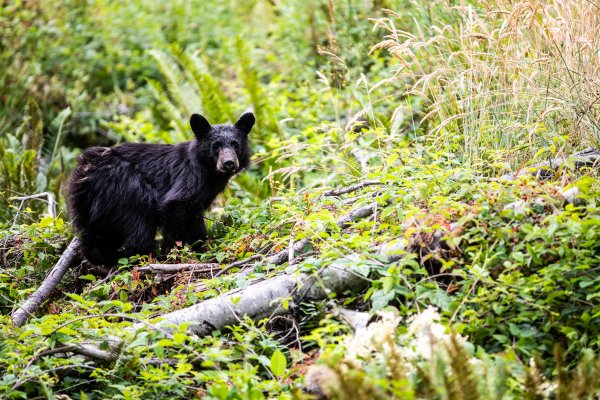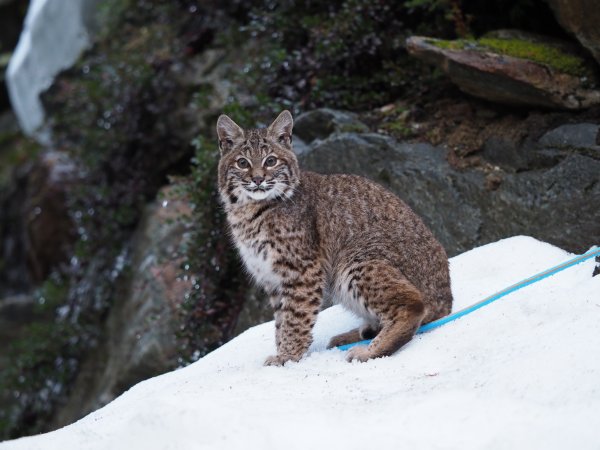Hey there, nature lover. Yes, you—the one marvelling at the rugged peaks, the winding rivers, and the biodiverse species here that could nourish, or maul you (or both). Whether you’re deep in the backcountry of the Sea-to-Sky Corridor or strolling through a park in Metro Vancouver, you’re on Indigenous lands, including the traditional, unceded territories of the following First Nations: q̓icəy̓ ̓(Katzie), q̓ʷɑ:n̓ƛ ̓ən̓ (Kwantlen), kʷikʷəƛ ̓ ̓əm (Kwikwetlem), máthxwi (Matsqui), xʷməθkʷəy̓əm (Musqueam Indian Band), qiqéyt (Qayqayt First Nation), Semiahmoo First Nation, Sḵwx̱wú7mesh Úxwumixw (Squamish), scəw̓aθən məsteyəxʷ (Tsawwassen First Nation) and səlilwətaɬ (Tsleil-Waututh Nation), shíshálh (Sechelt Nation), Stó:lō Nation, St’át’imc Nation, and Lil̓wat7úl (Lil’wat Nation).
Before you start frolicking through the forests or snapping pics of that bear (from a safe distance, right?), let’s talk about why these animals and plants deserve more than just a fleeting Instagram story. To First Nations in British Columbia, plants and animals aren’t just part of the scenery—they’re kin. From traditional stewardship methods to modern co-management plans, First Nations in British Columbia care for the health of the land, sky, water, plants, and animals and treat them as though life depended on it.
This Place is a Gift. Treat It Like One.
Plant and animal families, blue skies, clean waters and future water from the surrounding mountain don’t just exist as extras and backdrops in the movie of your life. And if we all treated them that way, the world (and your weekend getaways) would be much better off.

Salmon, Bears, Elk, and Eulachon
So, how do we honour these relatives? Imagine if someone barged into your house, trampled through your kitchen, scared your pets, and stole your dinner. That’s how a lot of wildlife experiences human visitors. The solution? Respect.
Salmon—the backbone of the Pacific Northwest—are more than just a delicious dinner option. These incredible fish, including Chinook, Coho, Sockeye, Pink, Chum, and Steelhead, feed the entire ecosystem. Bears feast on them, eagles snatch them out of rivers, and forests absorb their nutrients when they die. First Nations in the area have been managing salmon stocks sustainably for generations. From Sto:lo Nation communities on the Fraser River to the St’át’imc Nation, including Líl̓wat Nation, life is connected to the land and all its inhabitants.
Black bears and grizzly bears are the ultimate symbols of strength, wisdom, and, let’s be honest, a reminder not to leave your snacks unattended and to be quiet once in a while. Deeply woven into Indigenous stories, teachings, and knowledge systems, bears play a vital role in ecosystems by spreading nutrients, maintaining balance, and instilling just enough fear for respectful recreation. Squamish Nation has identified several culturally and spiritually significant wild spirit places that also host a small and threatened grizzly bear population around popular Elaho, Mamquam, and Ashlu Rivers.
Elk–just because you don’t see them, don’t forget about them! Massive, majestic, and–if you’ve ever heard one bugle in the wild–straight-up eerie. First Nations communities have relied on elk for food, clothing, and technology for thousands of years, using every part of the animal with a level of respect that modern society could learn from.
Eulachon, a small but mighty river fish, might not get the same hype as salmon, but don’t underestimate it. Known as “candlefish” because of its high oil content (seriously, you can dry one out and light it like a candle), eulachon has been an essential food source and trade item for Indigenous communities. Don’t confuse eulachon with herring, a population that has returned to Howe Sound after a century and with a collaborative approach to stewardship that includes a one-two combo: Indigenous Knowledge and Western science.
Indigenous Knowledge + Western Science + Us = A Winning Team
Respect for all our relations is just the beginning. From respect, care comes naturally, and so should our commitment to protect species and conserve their habitats. While First Nations have an ancestral commitment to protect their territories, it is your responsibility as a guest to gift the gift of your care to the land you are on.
The X̱ay Temíxw, Squamish Nation’s Sacred Land Use Plan, says there are currently 16 vertebrate species, two bird species considered to be at risk of extinction in the region, and 32 plant communities.
The area is home to some big-name endangered species—ever heard of the Peregrine Falcon, Marbled Murrelet, or Keen’s Long-eared Myotis? No? Well, they’re here, and they’d like you to keep it down while they try to survive. Thanks.
For too long, Western conservation efforts have treated Indigenous Knowledge as a footnote when in reality, it’s the OG of ecosystem management. Indigenous stewardship reflects an understanding that everything is interconnected (yes, even that mosquito that just bit you).
Change is coming. Co-management strategies—where Indigenous knowledge and Western science work together—lead to better wildlife protection policies. Why? The combo includes the best of both worlds or ways of knowing–Western focus on scientific method, quantitative research, and data collection that inform policy-making and Indigenous systems of knowledge that are timeless and heart-connected, focused on long-term sustainability, deep ecological understanding, and balance. Put them together and we get better policies, healthier ecosystems, improved cross-cultural understanding, and the possibility of a future where we don’t screw everything up.

Metro Vancouver: Urban Conservation and Critters Matter Too
Think respect and conservation only apply far from city lights? Think again. Even in the heart of Vancouver, nature is everywhere—from the salmon-spawning streams in North Shore parks to the bald eagles soaring over the Fraser River.
Nature in the city faces its own set of problems—pollution (including light and sound), habitat loss, human-wildlife conflict, and climate change. Just because you’re not in the backcountry doesn’t mean your actions don’t matter. Supporting Indigenous-led conservation efforts, reducing waste, and respecting protected areas in urban parks all contribute to healthy approaches to ecology, the care of the home we share.
Why This Matters (To You, To All of Us)
It’s not just about protecting rare birds and fish with fancy names. Healthy ecosystems mean clean air, clean water, and a livable planet—things we all kinda need and elements that BC is famous for. Indigenous communities have managed these lands with wisdom and respect for thousands of years. The least we can do is listen, learn, and do our part.
You don’t have to make a formal land acknowledgement before an audience of trees, but at the very least, know whose territory you’re visiting and carry it in your heart and mind. Recognizing Indigenous stewardship and governance isn’t just polite—it’s the first step in respecting this place and the people who have cared for it for generations.
So, go ahead and enjoy the epic landscapes. Take in the rugged coastline and the towering peaks. Marvel at the roots and berries, the finned, feathered, and furry. Take pictures. Laugh and be merry.
Just remember—this isn’t your place—it is where we all live. The land doesn’t belong to us. We belong to it. So, don’t love it to death.
Respect it. Appreciate it. Because family and home deserve nothing less.
Essential Resources
General
- BC AdventureSmart
- BC Parks - Homepage
- CWSAA - Alpine Responsibility Code
- BC Parks - Responsible Recreation
- Hello BC - How to Travel Safely & Responsibly
- Indigenous Tourism BC - How to Travel Responsibly
- Leave No Trace
- Outdoor Recreation Council of BC - Recreate Responsibly
- Recycle BC - Pack Lean Leave Clean
- RecycleBC - Pack Lean Leave Clean - Toolkit
- Wilderness Tourism BC - ExploreWildBC Pledge
- BC Parks - KBYG Toilet Edition
- BCSARA - Outdoor Education
- Invasive Species Council of BC - Play Your Part
- Tourism Squamish - Responsible Recreation
- Tourism Whistler - Responsible Travel
- Vancouver North Shore - Know Before You Go
- Fire & Ice Aspiring Geopark
- Átl'ka7tsem/Howe Sound Biosphere
- Adventure Hub - BC Search & Rescue Association
- AdventureSmart Trip Planning App
- BC Wildfire Service App
Camping
- Camper's Code
- WildSafeBC - Bare Campsite Program
- Outdoor Recreation Council of BC - Recreate Responsibly
- BC Parks - Stay Safe in Bear Country
- BC Parks - Campfire Bans & Safety
- BC Parks - Backcountry Visitor Guide
- BC Gov - Know the Rules for Rec Sites & Trails
- BCSARA - Outdoor Education
- Invasive Species Council of BC - Campers
- AdventureSmart Trip Planning App
Motorsports and Offroading
Fishing
Hiking
- BC AdventureSmart
- CWSAA - Alpine Responsibility Code
- Outdoor Recreation Council of BC - Recreate Responsibly
- BC Parks - Backcountry Visitor Guide
- BC Gov - Know the Rules for Rec Sites & Trails
- BCSARA - Outdoor Education
- Invasive Species Council of BC - Play Clean for Hikers
- AdventureSmart Trip Planning App
Mountain Biking
- Mountain Bike BC - Ride Respectfully
- Outdoor Recreation Council of BC - Recreate Responsibly
- BC Parks - Backcountry Visitor Guide
- BC Gov - Know the Rules for Rec Sites & Trails
- BCSARA - Outdoor Education
- Invasive Species Council of BC - Mountain Bikers
- Pemberton Off-Road Cycling Association
- Squamish Off-Road Cycling Association
- Whistler Off-Road Cycling Association
- North Shore Mountain Bike Association
- AdventureSmart Trip Planning App
Pets
Wildlife
Related Impacts

1 Garbage And Human Waste
The improper disposal of human waste and garbage is harmful to humans, the environment, and wildlife.
- Face masks collected by Vancouver plogger David Papineau
- 40,000
- Kilograms of trash removed by Divers for Cleaner Lakes and Oceans since 2013
- 29,188

2 Human-Wildlife Conflict
People and pets getting too close to wildlife can lead to conflict, injury, and death.
- Number of black bears euthanized in BC in 2024, down from 603 in 2023
- 303
- BC Parks reservations impacted by bear closures in 2024, up from 106 in 2023
- 128

4 Lack of Respect - People & Environment
From trampling on trails to human-caused wildfires, disrespectful behaviour is creating conflict between user groups and damage to the environment and communities.
- Percentage of human-caused wildfires in BC, down from 42% in 2023.
- 30%

5 Trespassing & Disrespectful Use
Disrespect for sensitive ecosystems, Indigenous land, cultural sites, and private property, is hurting communities, wildlife and the environment

6 Overcrowding, Overuse & Traffic
Increased visitation is causing traffic woes, parking issues, overcrowding, and overuse in recreational areas and urban environments.